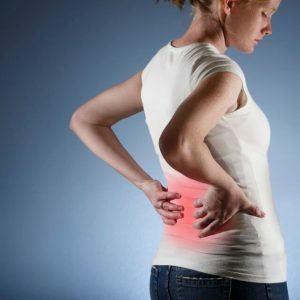Omission of the kidney: symptoms, causes, treatment, consequences
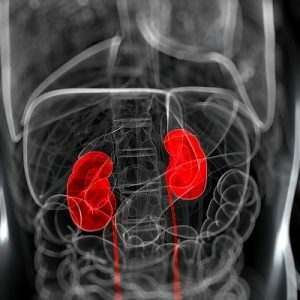
All organs in the human body take their place.Each organ is in certain anatomical and physiological relationships with neighboring organs and tissues, so changing its location in a number of cases can disrupt the stability of the environment at the "place of residence" - and the body is bad, and the "neighbors" are unhappy.Displacement of organs is much less common than other diseases( inflammations, trauma, tumors), but can cause serious inconveniences.This is especially true of the omission of the kidney.
Contents: What is nephroptosis? Nephroptosis: the causes of the disease Classification of nephroptosis by different criteria Symptoms of kidney failureWhat is nephroptosis
Kidney obsolescence in the medical language is called nephroptosis - from the words "nephro", which in Latin means "Kidney ", and" ptosis ", which translates as" omission ".This kidney is also called wandering or mobile.
If some organs of the human body can move without consequences in space with quite a significant amplitude( for example, intestines or tongue), then
nature has prepared the kidney for reclamation without the slightest movement in the so-called renal bed .Encompassing in it, the kidney does not come out from under the costal arch.But with nephroptosis it can fall into the abdominal cavity and even into the small pelvis.Nephroptosis: the causes of the disease
A set of reasons why the kidney falls below its bed, not too large, there are not so many risk factors, and not in every case they "shoot".Nevertheless, should be remembered about the risk of kidney failure if the following conditions or abnormalities on the part of the body are observed:
-
 "jumps" in weight both in the direction of weight loss and in the direction of gaining weight, because of this the thickness of fatTissues - when gaining weight, the kidney is displaced by them downwards, while losing weight, on the contrary, tries to occupy the vacant place formerly occupied by the "fat";
"jumps" in weight both in the direction of weight loss and in the direction of gaining weight, because of this the thickness of fatTissues - when gaining weight, the kidney is displaced by them downwards, while losing weight, on the contrary, tries to occupy the vacant place formerly occupied by the "fat"; - pregnancy and childbirth - in women this is one of the most common factors of nephroptosis ;The pregnant uterus with a gradual increase, "stepping on" the internal organs, pushes them down, most of all in this situation, the kidney is affected, which is normally not characterized by mobility( unlike the intestine or stomach);
- frequent physical injuries of the waist - first of all, this applies to modern sports with power elements( not only martial arts, but also football, hockey, basketball), is especially at risk for beginners who have not yet built up mass, strengthened muscles, but courageouslyRush into the thick of events, as a consequence - suffer from bruises and stretching of the muscles , and this is the prerequisite for nephroptosis ;
- permanent lifting of weights( is observed with athletes lifting the bar, workers who constantly move heavy goods, housewives, without pausing plying with huge bags on the route "market-house" and "supermarket-house" );As a result, the muscle press is overextended, the muscles are stretched, they cease to serve as a supporting framework - the kidney is lowered;
- congenital abnormalities of the location of one or both kidneys - as a risk factor, statistics are much less common.
Classification of nephroptosis according to different criteria
There are several classifications of this disease.
Depending on which kidney is affected, nephroptosis happens :
- right-sided( occurs most often);
- left-sided( occurs several times less often than right-hand);
- bilateral( occurs most rarely - the most common cause of bilateral nephroptosis is congenital anomalies, which affect mainly both kidneys).
Classify the disease and the stages:
- first - the kidney falls not lower than one vertebra, it occurs only in the vertical position of the body;
- second - the kidney falls on two vertebrae, can be probed if the patient is standing or sitting;
- the third - the kidney falls on three vertebrae, its lower pole can be palpated even in a small pelvis.
Symptoms of omission of the kidney
At first, when the omission of the kidney is negligible, it is difficult to diagnose the disease by clinical signs - they are often not observed, except that minor discomfort in the lumbar region can be disturbing.Patients write it off for everyday injuries, which were not noticed in daily rush, hypothermia, drafts, prolonged sitting( for example, with office work schedules).
The symptomatology of nephroptosis depends on its stage :
-
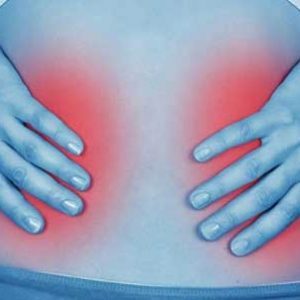 first - drawing pains arise in an upright position and disappear, it is only the patient lying down;
first - drawing pains arise in an upright position and disappear, it is only the patient lying down; - the second - the intensification of pain in the lumbar region can be triggered by non-severe physical work( sometimes even that which the child can do), climbing the stairs, physical exercises in the vertical position of the body( for example, pulling on the bar);After the provocation of pain subsiding in the supine position only after a while, sometimes do not pass, remain at the level of palpable discomfort;In the vertical position, a displaced kidney may be palpated;
- the third - disturb frequent expressed pains in the lumbar region, lying position from them does not save;The lowered kidney is probed in any position of the body.
In addition to pain syndrome, nephroptosis may exhibit a number of non-specific signs - such as are often found in other diseases. General weakness, malaise, fever is worrisome when you join an infection that poisons your body with toxins.Neurological manifestations are often a headache( up to migraines), dizziness, pain in the projection of the sciatic and femoral nerves.There may be loss of appetite, nausea, vomiting, in some cases - diarrhea.
Causes of clinical symptoms
Kidney does not belong to mobile( those that easily shift without consequences) to organs.Therefore, when it is omitted, there are a number of concomitant disorders that cause the emergence of the characteristic symptomatology of :
-
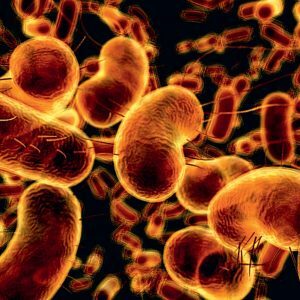 , the non-natural location of the kidney provokes pain syndrome, in the late stages of pain it is impossible to tolerate;
, the non-natural location of the kidney provokes pain syndrome, in the late stages of pain it is impossible to tolerate; - the artery that feeds the kidney is rather short, therefore, when the organ is lowered, it stretches, its lumen decreases, because of this the blood flow to the kidney decreases, the tissues of the organ begin to "starve", as a consequence - the kidney does poorly perform the duties assigned to it, Namely by filtration of blood and urine production;
- , the ureter that connects the kidney and the bladder, due to the displacement of the kidney, bends, urine can no longer flow freely over it, its stasis contributes to the development of infection-this is the reason for the infectious lesions of the kidney to join the hydronephrosis( the most common of these is pyelonephritis).
Diagnosis of the disease, additional research methods
 In the early stages of nephroptosis, the patient's complaints are not informative for the timely diagnosis of disease.Therefore, the collection of anamnesis( questioning for complaints, the occurrence and course of the disease) should be supplemented by examination, laboratory and instrumental methods of research.
In the early stages of nephroptosis, the patient's complaints are not informative for the timely diagnosis of disease.Therefore, the collection of anamnesis( questioning for complaints, the occurrence and course of the disease) should be supplemented by examination, laboratory and instrumental methods of research.
Palpation( feeling) is informative since the second stage of .In this period, the lowered kidney can be easily scoured from thin patients or those with asthenic type of physique( elongated, seeming thin body - but without objective weight loss), and in obese ones - only with deep palpation.In the third stage, the kidney is defined under the fingers of the doctor without difficulty.
The most accurate diagnosis can be made with ultrasound in the vertical position of the body , and also using this method to determine the state of the renal vessels and ureter.From the instrumental( hardware) methods of the study, excretory urography is successfully used - it will demonstrate the functioning of the kidney during the development of the disease.
Laboratory methods for studying nephroptosis will not be determined, but they will help in time to reveal its complications.So, a general analysis of blood and urine contributes to the diagnosis of the infection, a blood test for creatinine and urea will help to understand whether the kidney cures the excretory function.
Treatment of ovulation of the kidney, key approaches
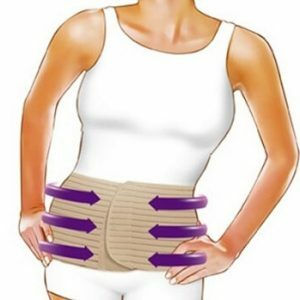 Treatment largely depends on the stage of the disease.
Treatment largely depends on the stage of the disease.
Since omission of the kidney is a mechanical disease, it should also be treated from the "mechanical" point of view of .In the first and second stages, a special bandage is used.Keeping the kidney in the right position, it not only hinders its attempts to slip down - the bandage helps strengthen the muscles that naturally hold the organ.LFK will come to strengthen the muscular frame to help the bandage.
With nephroptosis, consultation and supervision of a dietician are advisable.The specialist will help regulate the diet so that the patient "grows" a fat layer that helps keep the kidney in the right place at the right level.The nutritionist will prevent the other extreme, namely, the weight gain of the patient is higher than normal, which is fraught with a decrease in the general tone of the muscular framework and, as a result, the prerequisites for ovulation of the kidney.
In the third stage, only surgical intervention of is effective - the kidney is returned to its rightful place, which is strengthened to avoid relapses.
To prevent nephroptosis:
-
 Avoid any action that may lead to even minor injuries in the lumbar region - , although uncritical, but frequent, such trauma contributes to "whipping up"Of the muscular framework, because of which it does not help to keep the kidney in the normal position of ;
Avoid any action that may lead to even minor injuries in the lumbar region - , although uncritical, but frequent, such trauma contributes to "whipping up"Of the muscular framework, because of which it does not help to keep the kidney in the normal position of ; - lose weight or recover gradually, do not allow significant jumps in weight;
- correctly dosed the load in the gym, avoid lifting weights;
- regularly visit a urologist, do ultrasound and urography at his destination.
If you have undergone surgical treatment for nephroptosis, this means that you must avoid doubling the recurrence of the disease.Although some patients erroneously put hypertrophied hopes on the operation, forgetting that the kidney bed after surgery does not become a reinforced concrete cell for the kidney, and it can slip out of it again.
Kovtonyuk Oksana Vladimirovna, medical reviewer, surgeon, consulting physician

